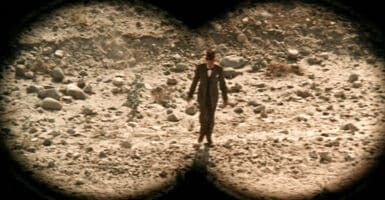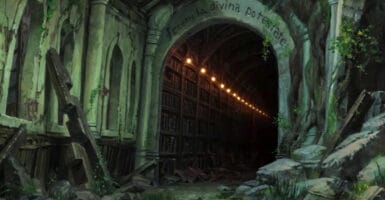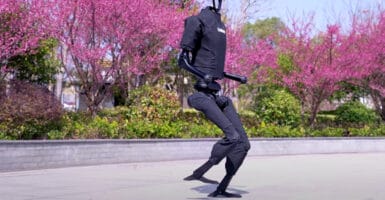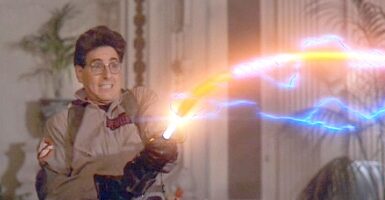Four-Quark Particle Could Be New State Of Matter
This article is more than 2 years old
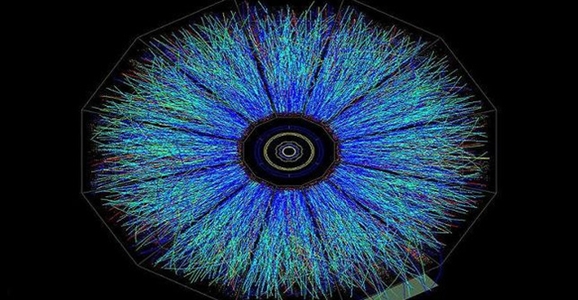 What do you get when you combine a charm quark, an anti-charm quark, an up quark, and an anti-down quark? One hell of a party! And, perhaps, a new state of matter.
What do you get when you combine a charm quark, an anti-charm quark, an up quark, and an anti-down quark? One hell of a party! And, perhaps, a new state of matter.
Remember when you learned in grade school that matter comes in solid, liquid, or gas form (and maybe you got some extra credit for identifying plasma as the fourth state of matter)? The more advanced our science gets, the more we realize that those four states of matter are only the tip of the iceberg. Now scientists at the Belle Experiment in Japan and the Beijing Spectrometer Experiment (BESIII) in China believe they’ve seen a new state of matter.
At both Belle and BESIII, scientists use colliders, a specific type of particle accelerator, to cause collisions between electrons and positrons. The collisions cause explosions that convert the energy of the particles into new states of matter. I’m pretty sure this is what would happen if Superman and Bizarro Superman were to collide.
Back in 2005, such a collision created particles called Y(4260) that initially resembled other particles comprised of a charm quark and an anti-charm quark (which sounds like most people I know), categorized as charmonium. But Y(4260) didn’t behave like other charmonium and has thus been kicked out of the club. Scientists realized that the Y(4260) particles decay quickly, and when they do, they become different particles called Zc(3900). Seriously, someone has to do something about these names.
Many questions arise from this experiment: first, what exactly is Y(4260) and what is it made of? And since scientists can’t answer that one, they definitely don’t know what Zc(3900) is. What they do know is that, while charmonium particles are neutral, Zc(3900) carries a charge. Zc(3900) also seems to be comprised of a charm quark and an anti-charm quark, but also an up quark and an anti-down quark. Don’t ask me what the difference is between being up and anti-down; all I know is they’re two of the six quark flavors. (I’m sorry to say you can’t taste a quark — the flavors refer to characteristics, and my favorite flavor is “strange”).
Ultimately, why does this matter? Well, because no one has ever been able to prove that a particle composed of four quarks actually exists — until now. Probably.
Belle and BESIII independently reported observing the Zc(3900) particle. Belle found 160 of them and BESIII found 300, which decreases the likelihood that this is a fluke. Right now, they’re calling the new class of particles that thus far includes Y(4260) and Zc(3900) “XYZ mesons” and will continue studying them. In the meantime, I’ll be working on my own quark flavor combinations.
